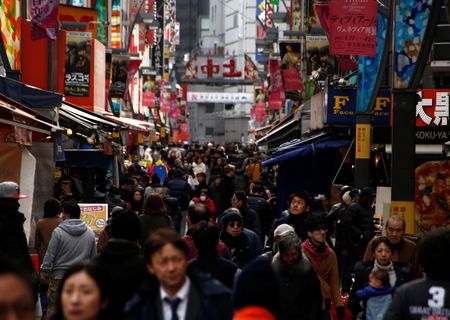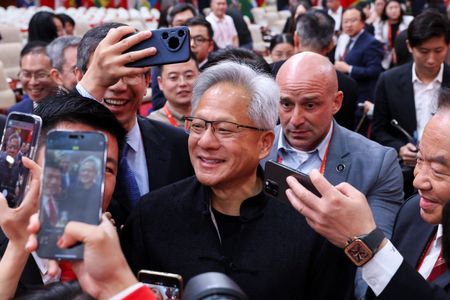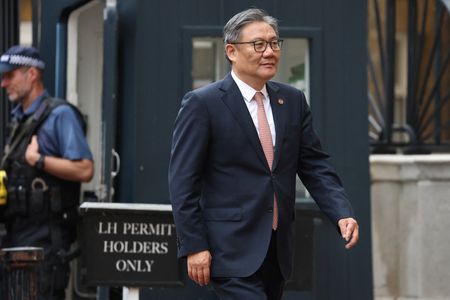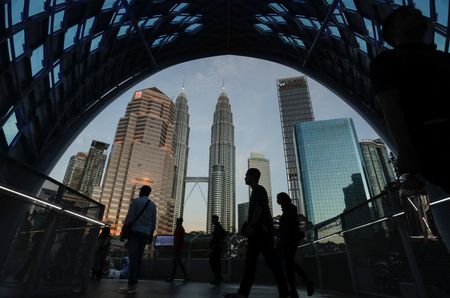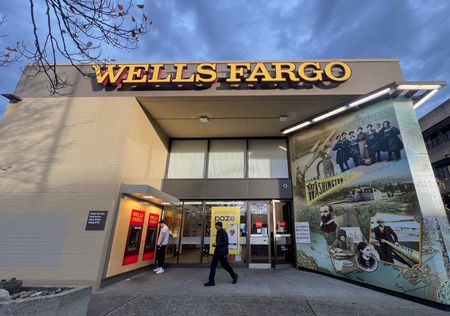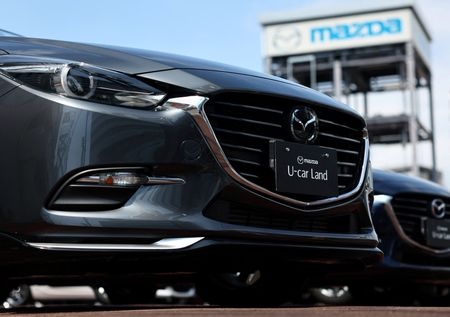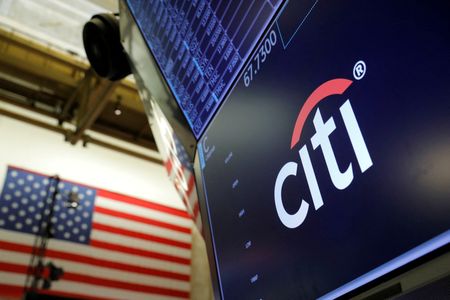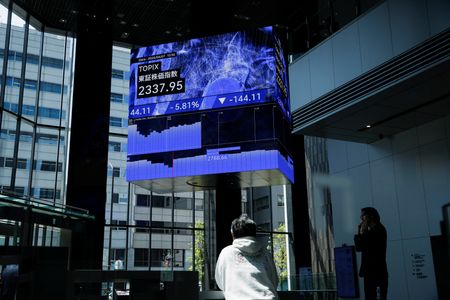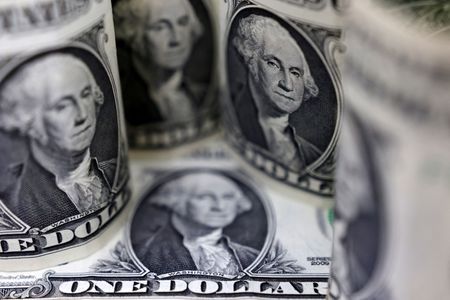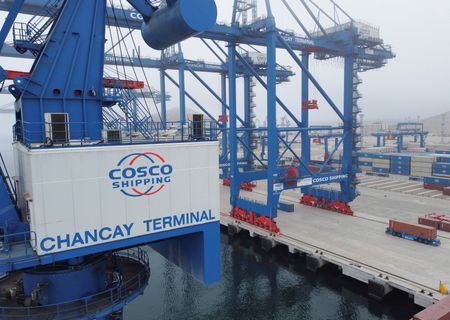By Leika Kihara and Takahiko Wada
TOKYO (Reuters) -Japan’s core inflation slowed in June but stayed above the central bank’s 2% target for well over three years, highlighting lingering price pressures that back market expectations for further interest rate rises.
The data underscores the challenge the Bank of Japan (BOJ) faces in balancing mounting inflationary pressure and risks to the fragile economy from U.S. tariffs, as it considers how soon to resume rate hikes from still-low levels.
The core consumer price index (CPI), which excludes volatile fresh food costs, rose 3.3% in June from a year earlier, data showed on Friday, matching a median market forecast.
The rise was smaller than the 3.7% increase in May due largely to resumption of gasoline subsidies, but remained above the central bank’s 2% target for the 39th straight month.
A separate index that strips away both fresh food and fuel costs – closely watched by the BOJ as a measure of domestic demand-driven prices – rose 3.4% in June from a year earlier after increasing 3.3% in May.
“Underlying inflation remains elevated and is almost certain to overshoot the Bank of Japan’s forecasts. However, with trade tensions looming large over the economy, the risk remains that the BOJ will stand pat for longer than we’re anticipating,” said Abhijit Surya, senior APAC economist at Capital Economics.
The data will be among factors the BOJ will scrutinise at its next policy meeting on July 30-31, when the board is expected to revise up its inflation forecast in a quarterly review of its projections.
Prices of food, excluding those of volatile fresh food like vegetables, rose 8.2% in June from a year earlier, accelerating from the previous month’s 7.7% gain in a sign of the mounting cost-of-living pressures gripping households.
The cost of staple rice nearly doubled from year-ago levels, which led to a 19% spike in the price of a rice ball and a 6.5% increase in sushi dine-outs, the data showed.
Service-sector inflation hit 1.5% in June from 1.4% in May, the data showed, suggesting that companies were passing on rising labour costs albeit at a slower pace than for goods.
Governor Kazuo Ueda has said the BOJ will tread carefully in hiking rates to ensure underlying inflation, or price rises driven by domestic demand and higher wages, durably hits 2%.
Broadening price rises are sharpening the BOJ’s attention to whether cost-driven price gains could affect underlying inflation by changing public perceptions on future inflation.
“If upward inflation risks heighten, the BOJ may need to act decisively as a guardian of price stability” and hike rates, hawkish board member Naoki Tamura said last month.
The BOJ exited a decade-long, radical stimulus programme last year and raised short-term interest rates to 0.5% in January on the view that Japan was on the cusp of sustainably hitting its 2% inflation target.
While the central bank has signalled its readiness to raise rates further, the economic impact of higher U.S. tariffs forced it to cut its growth forecasts in May and complicated decisions around the timing of the next rate increase.
Key to the BOJ’s rate-hike timing would be whether firms will continue to hike wages next year despite headwinds from U.S. tariffs, and help underpin economic growth, analysts say.
Japan’s economy shrank in the first quarter as rising living costs hurt consumption. Exports fell for a second straight month in June as the sweeping U.S. tariffs took a toll on manufacturers.
A slight majority of economists in a June Reuters poll expected the BOJ to forgo another rate hike this year.
(Reporting by Leika Kihara and Takahiko Wada; editing by Neil Fullick and Shri Navaratnam)

